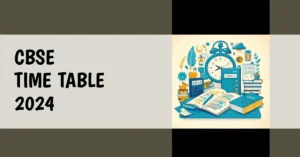In a startling revelation, the International Labour Organization (ILO) has highlighted a concerning trend in India’s employment landscape: university graduates face higher unemployment rates than their illiterate counterparts. This article delves into the data and reports to uncover the nuances of this phenomenon.
Understanding the Data
According to the ILO, the unemployment rate for graduates in India is a staggering 29.1%, which is nearly nine times the 3.4% rate for those who cannot read or write1. This discrepancy is not only alarming but also indicative of a deeper issue within the Indian job market and education system.
Unemployment Rates: Educated vs. Illiterate
| Education Level | Unemployment Rate |
|---|---|
| Graduates | 29.1% |
| Illiterate | 3.4% |
The data suggests a mismatch between the skills imparted by higher education institutions and the demands of the job market. Renowned economists, including former central bank Governor Raghuram Rajan, have warned that India’s education system may be failing to prepare students for the economic challenges ahead1.
The Youth Unemployment Crisis
The problem of unemployment is particularly pronounced among the youth, especially those with secondary or higher education. The unemployment rate for this demographic is six times higher at 18.4%1. This trend has been intensifying over time, reflecting the inability of the Indian economy to generate sufficient remunerative jobs for educated youth entering the labor force.
Gender Disparity in Unemployment
The gender disparity in unemployment is also stark, with women being disproportionately affected. They account for 76.7% of the educated unemployed youth, compared to 62.2% for men1. This is compounded by India’s low female labor force participation rate, which stands at about 25%1.
Urban vs. Rural Divide
Joblessness is higher in urban areas than in rural parts of India. This urban-rural divide further complicates the employment scenario, as the majority of higher education institutions are located in urban centers, where job competition is fierce.
The Rise of Gig Jobs
The ILO report also sheds light on the increase in gig jobs, such as food delivery drivers. These temporary and often low-paying jobs are on the rise, blurring the lines between employment and self-employment and raising concerns about worker well-being and working conditions1.
The high unemployment rates among university graduates in India can be attributed to several interrelated factors:
Lack of Employable Skills
A significant reason for the unemployment crisis is the mismatch between the education system and market demands. Many graduates lack the practical skills and hands-on experience that employers seek1.
Economic Slowdown and Pandemic Impact
The economic slowdown, exacerbated by the COVID-19 pandemic, has led to reduced job creation and increased competition for available positions2.
Preference for Certain Jobs
Graduates often have higher expectations and prefer to wait for jobs that match their qualifications rather than taking up available positions that they deem unsuitable3.
Technological Changes
Rapid technological advancements have rendered some traditional skills obsolete, while there is a growing demand for new skill sets that many graduates do not possess1.
Urban-Rural Divide
The concentration of educational institutions in urban areas and the lack of opportunities in rural regions contribute to higher unemployment rates among educated youth4.
Gender Disparity
Women face additional challenges in the job market, including societal expectations and gender biases, leading to higher unemployment rates among female graduates2.
These factors collectively contribute to the paradox where higher education does not necessarily guarantee employment, highlighting the need for systemic changes in both education and economic policies.
India can address the issue of high unemployment rates among university graduates through a multi-faceted approach:
Enhancing Skill Development
- Revamping Education: Aligning higher education with industry needs to ensure that graduates possess employable skills1.
- Vocational Training: Introducing skill-based training and vocational studies at the undergraduate level to improve job readiness2.
Economic and Policy Interventions
- Economic Growth: Stimulating economic activity to create more jobs, especially in sectors that can absorb a large workforce1.
- Government Schemes: Implementing government initiatives that provide training, subsidies, and support for entrepreneurship3.
Bridging the Urban-Rural Divide
- Rural Employment: Developing infrastructure and job opportunities in rural areas to prevent migration to overcrowded cities1.
Promoting Entrepreneurship
- Startup Culture: Encouraging an entrepreneurial mindset in universities to foster innovation and self-employment4.
Addressing Gender Disparity
- Empowering Women: Creating policies that support women’s participation in the workforce and address gender biases1.
Leveraging Technology
- Digital Literacy: Emphasizing digital skills in the curriculum to prepare students for the technology-driven job market1.
By implementing these strategies, India can create a more dynamic job market that not only values academic qualifications but also recognizes practical skills and innovation.
Conclusion
The data and reports paint a grim picture of the employment situation for educated youth in India. It is a wake-up call for policymakers, educators, and industry leaders to bridge the gap between education and employment and to create a job market that can absorb the growing number of university graduates.
This article has utilized the latest data and reports to provide a comprehensive understanding of the unemployment rates among university graduates versus illiterate individuals in India. The findings are a testament to the need for a critical evaluation of the education system and job creation strategies in the country.



